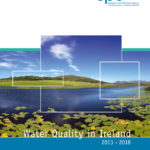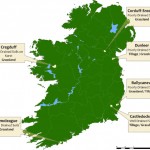09 December 2019: The EPA has today published the Water Quality…
Teagasc Signpost Series: Water quality in Ireland: where to from here?
This webinar was given by Jenny Deakin of the EPA Catchments Unit on 5 June 2020 as part of the Teagasc Signpost Series. It focuses on water quality and agriculture and looks at:
- The condition of our waters
- What are the problems?
- A closer look at nutrients
- What are the measures?
- Challenges and Opportunities
Jenny’s presentation was followed by a Q&A session which was facilitated by Mark Gibson, Teagasc ConnectEd. This was the tenth in a series of Sustainable Agriculture Webinars aimed at Irish Agri Professionals
Webinar
Presentation: Water quality in Ireland – where to from here?
The Teagasc Signpost Series
This webinar series, The Signpost Series – ‘Pointing the way to a low emissions agriculture’ is organised through the Teagasc ConnectEd service, with the support of the National Rural Network, Dairy Sustainability Ireland and Food Drink Ireland Skillsnet.
All webinars are available to view on the Teagasc website.







